Expert Advice from Canadian Tax Professionals
The year-end provides a crucial opportunity for individuals to implement tax-planning strategies that can reduce their income tax burden.
As we approach the end of 2024, here are our top income tax planning tips tailored for Canadian taxpayers, ensuring compliance with the latest updates and regulations.
Top Individual Income Tax Planning Strategies
1. Pension Income Splitting
Canadians receiving eligible pension income can allocate up to 50% of their qualifying pension income to their spouse or common-law partner. This strategy helps reduce overall family tax liability by shifting income from a higher tax bracket to a lower one.
Tax Tip: Consider the Old Age Security (OAS) clawback threshold, which for 2024 begins at $88,260, when planning income splitting. Ensure it doesn’t inadvertently affect OAS or other income-tested benefits.
2. Maximize RRSP Contributions
Registered Retirement Savings Plans (RRSPs) remain a cornerstone of individual tax planning. Contributions are tax-deductible, and earnings grow tax-free until withdrawn.
- The 2024 RRSP contribution limit is 18% of the previous year's earned income, up to a maximum of $31,560 (subject to unused room).
- The deadline for 2024 contributions is February 29, 2025, but contributing earlier maximizes the benefit of tax-free compounded growth.
3. Leverage the Registered Disability Savings Plan (RDSP)
For individuals with disabilities, the RDSP offers significant savings opportunities.
- Contributions are not tax-deductible, but earnings within the plan grow tax-free.
- Eligible individuals may qualify for matching Canada Disability Savings Grants (up to $3,500 annually) and Canada Disability Savings Bonds (up to $1,000 annually).
- Withdrawals may include taxable components, such as grants, bonds, and income earned within the RDSP.
Tax Tip: Ensure RDSP contributions align with the Disability Tax Credit (DTC) eligibility requirements.
4. Maximize Tax-Free Savings Accounts (TFSA)
The TFSA contribution limit for 2024 is $6,500, with total available room accumulated since 2009 reaching $88,000 for eligible Canadians who haven’t previously contributed.
- Earnings and withdrawals from a TFSA are completely tax-free.
- Contributions are not tax-deductible but offer greater flexibility compared to RRSPs.
Tax Tip: Gift funds to a lower-income family member for their TFSA without triggering attribution rules, provided the funds remain in their TFSA.
5. Registered Education Savings Plans (RESP)
RESPs remain a powerful tool for saving for a child’s post-secondary education:
- Contributions are not tax-deductible, but earnings grow tax-free.
- The Canada Education Savings Grant (CESG) matches 20% of contributions, up to a maximum of $500 annually (lifetime maximum of $7,200).
Tax Tip: If you missed RESP contributions in previous years, you can catch up by contributing up to $5,000 annually to receive the maximum CESG for both the current and prior years.
6. Eliminate Non-Qualifying RRSP Investments
Investments in an RRSP must meet certain criteria to avoid punitive taxes. Non-qualified investments trigger a 50% tax penalty on the value of the investment.
Tax Tip: Dispose of non-qualified RRSP investments before the end of the taxation year to claim a refund on penalties. Consult with a tax professional to ensure compliance.
7. Repay Home Buyers' Plan Withdrawals
If you withdrew funds under the Home Buyers’ Plan (HBP) to purchase a first home, you must repay the amount annually within 15 years. For 2024, repayments are due by December 31 to avoid adding the amount to taxable income.
8. Plan for RRSP Conversions at Age 71
Taxpayers turning 71 in 2024 must convert their RRSP into a Registered Retirement Income Fund (RRIF) or an annuity by December 31, 2024. Failure to do so will result in the entire RRSP value being added to taxable income.
Tax Tip: If you have unused RRSP contribution room and a younger spouse, consider a spousal RRSP to continue contributing.
9. Consider Charitable Donations
Donations to registered charities offer generous tax credits. The federal tax credit starts at 15% for the first $200 donated and increases to 29% for amounts above $200. Provincial credits vary by jurisdiction.
Tax Tip: Carry forward unused donation credits for up to five years to maximize the tax benefit.
10. Prepay Certain Deductible Expenses
Consider prepaying deductible expenses such as medical expenses, child-care fees, or investment-related fees to ensure they are included in the 2024 tax year.
Conclusion: Optimize Your Tax Position Before Year-End
The end of the year presents an excellent opportunity for Canadians to implement strategic tax-planning measures. By taking advantage of available deductions, credits, and savings vehicles, you can significantly reduce your overall tax liability.
Reminder: Tax laws change frequently, and individual circumstances vary. Consulting a tax professional ensures your plan aligns with current regulations and maximizes your financial benefit.
This article is written for educational purposes.
Should you have any inquiries, please do not hesitate to contact us at (905) 836-8755, via email at info@taxpartners.ca, or by visiting our website at www.taxpartners.ca.
Tax Partners has been operational since 1981 and is recognized as one of the leading tax and accounting firms in North America. Contact us today for a FREE initial consultation appointment.
#NewmarketAccountant #KeswickAccountant #AuroraAccountant #AuroraTax #NewmarketTax #CRAAudit #CRATax #CPA #MahadMohamed #CPAAudit #CPATax #CharteredAccountant #Moody #KPMGTax #TaxHelp #CanadaTax #CRA #USTax #TaxpayerRelief #TaxForgiveness #Mahad #GoodAccountant #BestAccountant #TaxAccountant #RichmondHillAccountant #BarrieAccountant #BarrieTax #MarkhamTax #MarkhamAccountant


